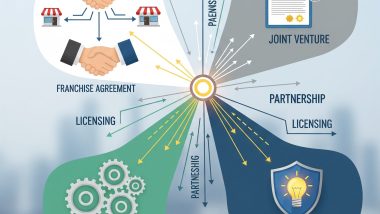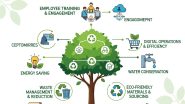Bankruptcy often carries a heavy stigma, conjuring images of financial ruin and desperation. However, it is also a legal tool designed to offer relief to individuals and businesses overwhelmed by debt.
Understanding what bankruptcy truly means, the different types available, and the process involved can help demystify this often misunderstood concept.
This guide provides a clear and comprehensive overview of bankruptcy, its implications, and alternatives, empowering you to make informed financial decisions.
What is Bankruptcy?
Bankruptcy is a legal process through which individuals or entities who cannot repay their debts to creditors seek relief from some or all of their obligations.
It is designed to provide a fresh start for the debtor while ensuring that creditors are treated fairly. Bankruptcy laws have evolved significantly over the years, with roots tracing back to ancient civilizations where debtors were often subjected to harsh penalties.
Today, bankruptcy is governed by federal law in the United States, and it is intended to offer a balanced approach to debt relief. Contrary to popular belief, bankruptcy does not necessarily mean the end of one’s financial life. It can be a strategic move to regain control over finances and work toward a more stable future.
Types of Bankruptcy
There are several types of bankruptcy, each tailored to different situations and needs. The most common types are Chapter 7, Chapter 11, and Chapter 13.
- Chapter 7 Bankruptcy: Often referred to as "liquidation bankruptcy," Chapter 7 involves the sale of a debtor's non-exempt assets by a trustee. The proceeds are then distributed to creditors. It is typically used by individuals with limited income who cannot repay their debts.
- Chapter 11 Bankruptcy: Known as "reorganization bankruptcy," Chapter 11 is primarily used by businesses to restructure their debts while continuing to operate. It allows for the development of a plan to repay creditors over time, often by renegotiating terms and conditions.
- Chapter 13 Bankruptcy: This type of bankruptcy is designed for individuals with a regular income who can repay some or all of their debts through a court-approved repayment plan. The plan usually spans three to five years and allows debtors to keep their assets while catching up on missed payments.
Understanding which type of bankruptcy is suitable for a particular situation is crucial, as each has its own set of eligibility requirements and implications.
The Bankruptcy Process
Filing for bankruptcy involves several steps and requires careful consideration and preparation. The process typically begins with pre-bankruptcy counseling from an approved credit counseling agency. This mandatory step helps ensure that bankruptcy is the most appropriate option.
Once the decision to file is made, the debtor must complete a series of forms detailing their financial situation, including income, expenses, assets, and liabilities. These forms are filed with the bankruptcy court, which assigns a trustee to oversee the case. The trustee’s role is to review the paperwork, ensure compliance with bankruptcy laws, and distribute any assets to creditors if applicable.
A key part of the process is the meeting of creditors, also known as a 341 meeting. During this meeting, the trustee and creditors may ask the debtor questions about their financial situation and the information provided in the bankruptcy filing.
Consequences of Filing for Bankruptcy
Filing for bankruptcy can have immediate and long-term effects on a debtor’s financial life. One of the most immediate impacts is the automatic stay, which halts most collection actions, including lawsuits, wage garnishments, and harassing phone calls from creditors.
However, bankruptcy also has significant consequences for credit scores, making it challenging to obtain new credit, rent an apartment, or even secure certain types of employment for several years. The impact varies depending on the type of bankruptcy filed, with Chapter 7 remaining on credit reports for up to ten years and Chapter 13 for up to seven years.
Additionally, while some debts can be discharged through bankruptcy, others, such as student loans, child support, and certain taxes, are typically not dischargeable. It’s essential to understand what debts will remain after bankruptcy and plan accordingly.
Alternatives to Bankruptcy
Bankruptcy is one of many options for dealing with overwhelming debt. Before filing, it is worth considering several alternatives:
- Debt Consolidation: This involves taking out a single loan to pay off multiple debts, often at a lower interest rate. This can simplify payments and reduce overall costs.
- Debt Settlement: In this approach, the debtor negotiates with creditors to settle debts for less than the full amount owed. This can be a viable option for those with significant but not unmanageable debt.
- Financial Counseling and Budgeting: Professional financial counselors can help develop a budget and financial plan to manage debt without resorting to bankruptcy. This approach may include negotiating lower payments with creditors or finding ways to increase income.
Each alternative has its pros and cons, and the best choice depends on the individual's specific financial situation and long-term goals.
Life After Bankruptcy
Life after bankruptcy can be challenging, but it also presents an opportunity to rebuild and start fresh. Rebuilding credit is often the first step, which can be done by obtaining a secured credit card, making timely payments, and keeping credit balances low.
Creating and sticking to a realistic budget is crucial to avoiding future financial pitfalls. Many people find that financial stability improves significantly after bankruptcy as they have the opportunity to learn from past mistakes and make more informed decisions moving forward.
Success stories abound of individuals who have used bankruptcy as a stepping stone to regain their financial footing and build a better future. With patience, discipline, and proper planning, it is possible to recover from bankruptcy and achieve financial independence.
Conclusion:
Bankruptcy can be a daunting concept, but it is ultimately a legal tool designed to provide relief and a fresh start for those facing insurmountable debt. Individuals can make informed decisions about their financial futures by understanding the different types of bankruptcy, the process involved, and the consequences. It’s essential to seek professional advice and consider all options before making such a significant decision.
Frequently Asked Questions
Q: Can I file for bankruptcy more than once?
Answer: Yes, but there are time limits between filings. For example, if you filed for Chapter 7 bankruptcy, you must wait eight years before filing again under the same chapter.
Q: Will I lose all my assets if I file for bankruptcy?
Answer: Not necessarily. Many exemptions allow debtors to keep certain assets, such as a primary residence, personal items, and retirement accounts, depending on the type of bankruptcy filed and state laws.
Q: Does bankruptcy eliminate all types of debt?
Answer: No, some debts, like student loans, child support, and certain taxes, are typically not dischargeable through bankruptcy.



















